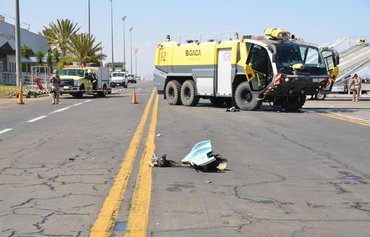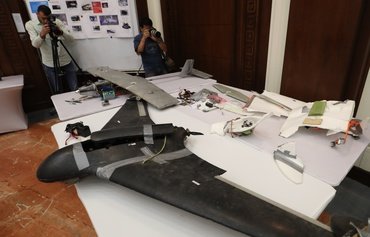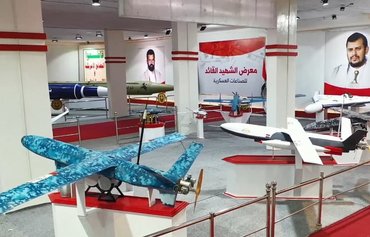The Houthis' claim to have carried out the recent attacks on Saudi oil facilities is patently false and is a gross exaggeration of the militia's capabilities, as it does not have access to the weapons technology that was used, experts said.
A few days after the attacks, Houthi spokesman Brig. Gen. Yahya Saree announced the Iran-backed militia (Ansarallah) had carried out the attacks using jet-powered and regular (propeller-powered) unmanned aerial vehicles (UAVs).
These were launched from three different locations, he said, based on the range, flight path and direction, which varied according to the location of the target.
Saree claimed the attacks had been carried out with third-generation, long-range Qasef UAVs (Qasef-3), the Samad-3 UAV and also jet-powered UAVs.
Saudi defence ministry spokesman Col. Turki al-Maliki said the investigations into the attacks on the two Aramco production plants revealed that 18 drones and seven cruise missiles had been used in the attack.
Al-Maliki displayed photos and remnants of the missiles used in the attack at a September 18th press conference, where he revealed that Iranian-made Delta Wing UAVs and 'Ya Ali' precision-guided cruise missiles had been used.
Houthis did not have the technology
"It is impossible for Houthis to possess jet-powered UAVs because they are manufactured by major countries and sold through publicly-announced deals," said Abaad Centre for Strategic Studies director Abdulsalam Mohammed.
The UAVs used in the Saudi attacks are ordinary propeller-powered models that use petroleum or electricity, and are not jet-powered, he told Al-Mashareq.
Saree’s exaggeration of the Houthis' military capabilities is part of the militia's efforts to puff itself up in the media, in co-ordination with Iran, Mohammed said.
The Houthis' false claim of responsibility for the attacks was aimed at pressuring Saudi Arabia to stop the war it is fighting against the Houthis in support of the Yemeni government, political analyst Faisal Ahmed told Al-Mashareq.
But the militia was not capable of carrying out the attacks, he said.
Launching UAVs from three different locations at a specific target at a specific time, as the Houthis claim to have done, "requires greater capabilities and a single highly-equipped command and control centre", Ahmed said.
This sort of operation requires "high-level military expertise", he added, noting that the Houthis would not have been able to pull it off alone.
Jet-powered UAVs are still new military technology, he noted, pointing out that according to Iranian media, Iran launched its first such vehicle just months ago.
As it is impossible that Iran could have smuggled this weapon to the Houthis so soon, he said, this "lays bare the Houthis' lies and exposes Iran's direct involvement in these attacks".
Houthis capabilities 'remain limited'
The Houthis' claim of responsibility for the attacks on the Abqaiq and Khurais oil facilities reveals their commitment "to follow everything dictated to them by Iran", said Yemen's Deputy Minister of Human Rights Nabil Abdul Hafeez.
Iran is the Houthis' main supporter, he told Al-Mashareq, and Iranian military experts are involved in the oversight of the Houthis’ military operations.
But the capabilities of the Houthis alone remain limited, he said, noting that Iran's intervention, through supplying weapons and experts, have strengthened the militia's capabilities in order to serve the regime's interests.
"Iran is using the Houthis as a tool to implement its agenda, which aims to destabilise the region, at times by creating incidents in the Gulf and other times by attacking the economic oil facilities in Saudi Arabia," he said.

![A Yemeni man carries a machine-gun on his shoulder during a tribal meeting in Houthi-held Sanaa on September 21st. [Mohammed Huwais/AFP]](/cnmi_am/images/2019/10/24/20472-Yemen-Sanaa-Houthis-600_384.jpg)






